

In the hope that leaf scars might be useful in distinguishing our 3 Central Texas taxa I encountered two difficulties: (1) old leaf scars were commonly compressed owing to growth of the stem; and (2) leaves prior to detaching naturally often tore, distorting the scar area. Consequently I decided to wait until mid November when leaves were either falling naturally or detached easily without distorting the scar. On November 15 & 19 I collected short branch sections from trees that I had been able to identify from samaras. In all I collected branches with scars and took images of over 130 scars. From these I selected the most representative scar images. Then for each taxon I selected 9 scars: 3 most typical scars, 3 that were similar to the typical but somewhat different in shape, and 3 that I felt would not be useful in distinguishing the taxa. These are presented in the table below, 3 columns, each with 3 images. [Note: The table is quite wide, so some horizontal scrolling may be needed.]
In my opinion no description will accommodate the full range of variation for a given taxon. But it does remain a useful differentia only if a large enough sampling is made, and a fresh bud is considered. The color of the bud with F. albicans is reddish brown. The bud of F. berlandieriana typically cuts a sharper notch into the top of the scar. The angle of the bud should be taken into consideration: upward with F. albicans and F. berlanderiana, outward with F. pennsylvanica.
| Most typical | Similar | Difficult |
|---|---|---|
| F. albicans | ||
   |
   |
   |
| F. pennsylvanica | ||
   |
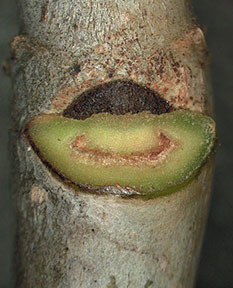   |
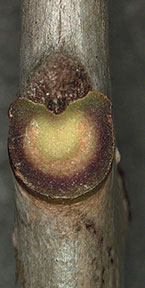   |
| F. berlandieriana | ||
 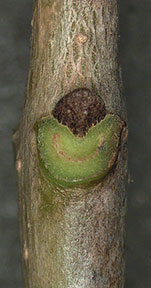 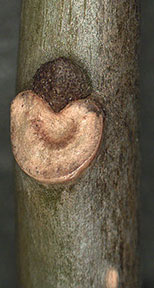 |
   |
 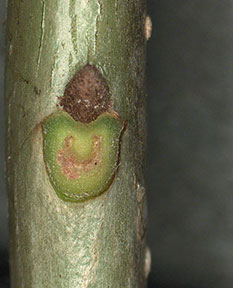  |